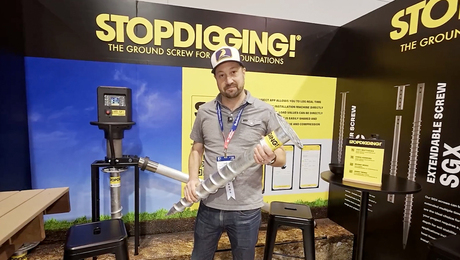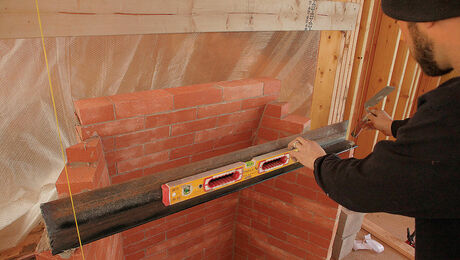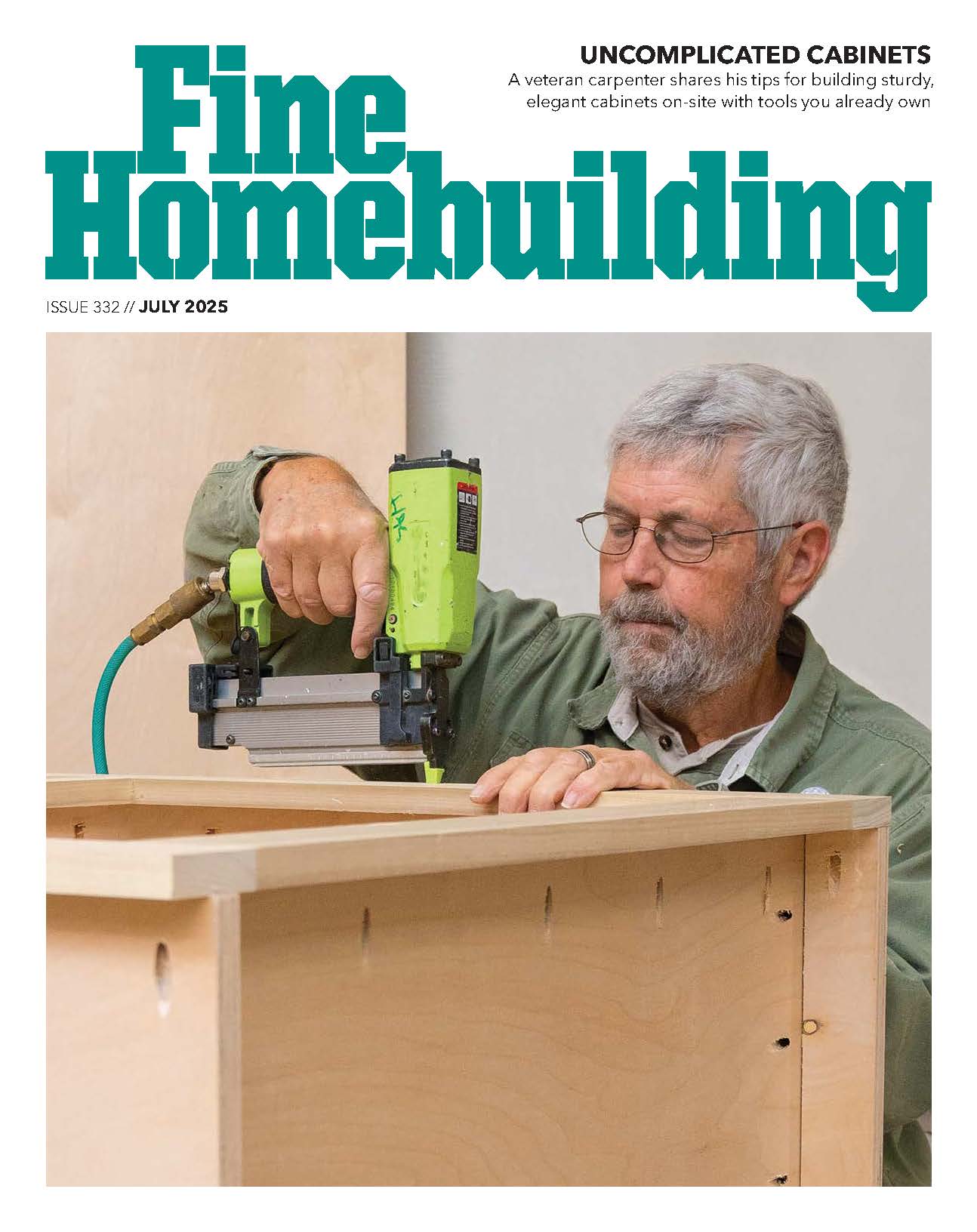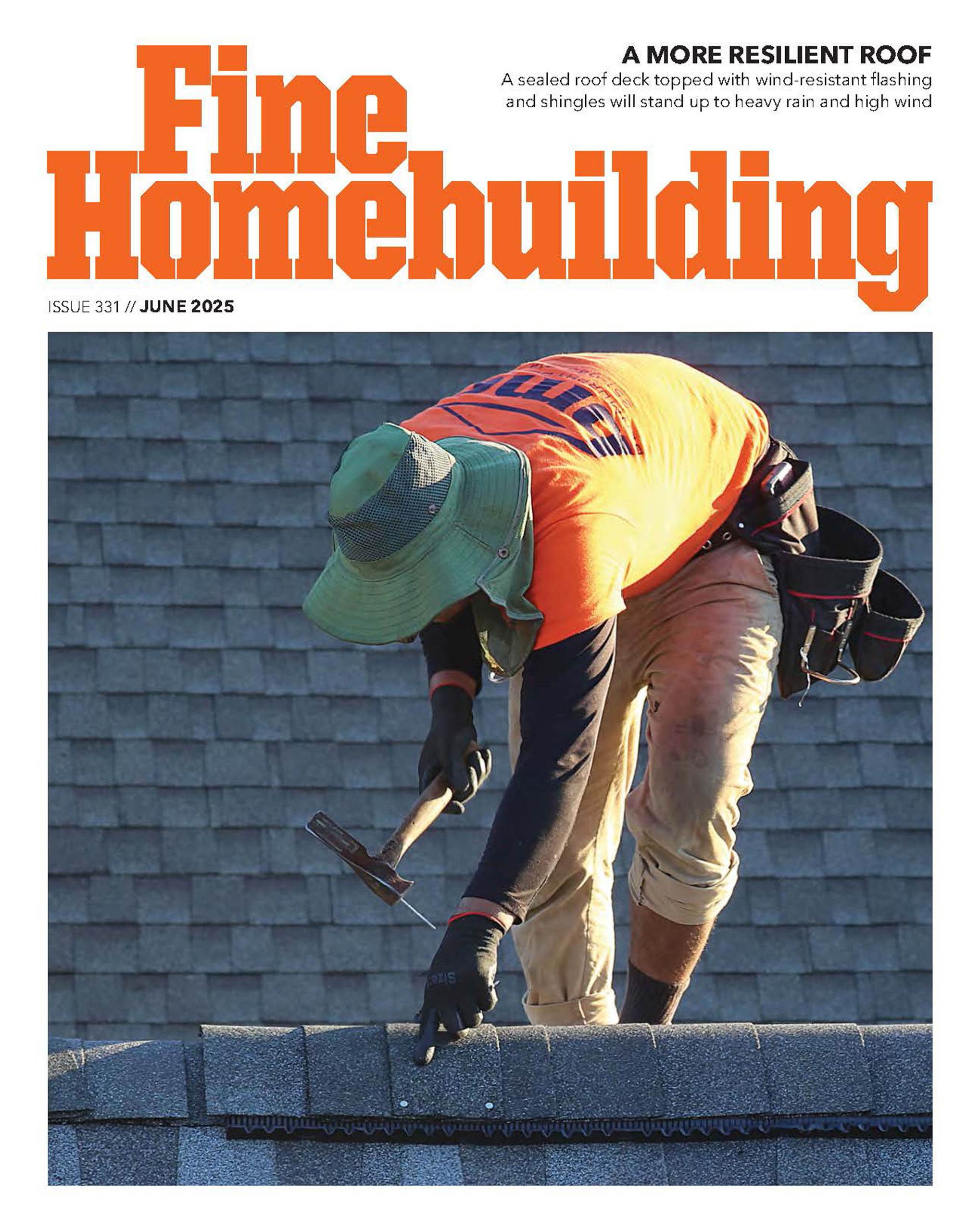I’m learning gas piping installation and noticed a frequent reference to Water Column test, such as 14″ water Column. What is WC test and how do you perform the test and what does it tell you specifically?
Discussion Forum
Discussion Forum
Up Next
Video Shorts
Featured Story

Discover a concrete-free foundation option that doesn't require any digging.
Featured Video
Video: Build a Fireplace, Brick by BrickHighlights
"I have learned so much thanks to the searchable articles on the FHB website. I can confidently say that I expect to be a life-long subscriber." - M.K.
Fine Homebuilding Magazine
- Home Group
- Antique Trader
- Arts & Crafts Homes
- Bank Note Reporter
- Cabin Life
- Cuisine at Home
- Fine Gardening
- Fine Woodworking
- Green Building Advisor
- Garden Gate
- Horticulture
- Keep Craft Alive
- Log Home Living
- Military Trader/Vehicles
- Numismatic News
- Numismaster
- Old Cars Weekly
- Old House Journal
- Period Homes
- Popular Woodworking
- Script
- ShopNotes
- Sports Collectors Digest
- Threads
- Timber Home Living
- Traditional Building
- Woodsmith
- World Coin News
- Writer's Digest


















Replies
Just a measure of pressure. 14" WC is a pressure that would raise a column of water 14 inches. It's used for low pressures where you'd otherwise be talking about a small fraction of a PSI. 1" of water column = 0.0360 PSI.
Ok, what's the purpose of knowing it? To find out what the gas pressure is in the gas line in question? Like in the book it talks about the need to use a pressure regulaor where the there is an elevated pressure over 14" W.C. The regulator I guess converts the elevated pressure downward to lower pressure for appliances. I think that's what it's saying. I've also seen 6" W.C. listed as well and trying to understand the differences between 6" and 14".If at first you don't succeed, try using a hammer next time...everything needs some extra persuasion from time to time. -ME
Yeah, appliances need a certain range of pressures, and if the pressure is over the ratings of the appliance, a regulator is needed to drop the pressure. 6" WC is obviously a little less than half the pressure of 14" WC.I'm not in the business, so don't know what typical line pressures are -- hopefully someone else will chime in. But if you're on standard city gas then you shouldn't need a regulator (other than the one associated with the gas meter) to attach a common gas appliance. And the city gas folks would be able to tell you what their standard pressure is.Propane may be a bit different. (And of course you need different parts in the appliance for propane vs natural gas.)
God is REAL, unless explicitly declared INTEGER
As Dan mentioned, appliances "expect" the gas pressure to be within a certain range. And the pressure in the lines of your house may or may not be within that range.In many states, codes require that gas be piped in black iron or galvanized, and that the pipe be large enough to carry the needed volume at "appliance pressure".Here in NC, you can use 3/8" soft copper for gas. It's easy to run the pipe, but it won't carry very much volume at that low pressure. So, the gas company sets the meter (which is a primary pressure regulator as well as a meter) at 2PSI.A 3/8 line carries sufficient volume at 2PSI, so all the appliances are 'fed'. But each appliance also needs its own regulator, to drop the pressure back down to 4" - 6". When I installed my new gas stove last year (was formerly electric) I had forgotten to put the regulator in. The stove would light very briefly before shutting off. The increased pressure was overwhelming the stove's internal valves and regulators.
And if you're really interested, I remember finding a couple of sites on the web that had pressure calculators -- key in 'inches WC', and it would tell you PSI (or vice versa). I didn't save the websites, but google will find them.
Politics is the antithesis of problem solving.
Here in PA we can use CSST Tracpipe and that's what I been starting to use. I only ever did one installation using it and it was a breeze and a half. Now I know why some appliances I see have their own regulators. Like the cooktop I installed a year ago, had an internal regulator protruding from the bottom to which you connected. THe part I'm trying to learn more about now is proper sizing. For example, I have a client who wants me to install 2 NG heaters in his large workshop. The gas connection is 100' away and is a 1" Iron pipe. THe heaters have 1/2" gas inlets. I'm to run the CSST underground in NM Conduit and go to the first unit, then chain to the next unit. Im' trying to learn now how to figure which size CSST to use to the first unit (3/4"?) and to the next unit (1/2"?). But then I saw all this W.C stuff used in calculating piping sizes and trying to figure the correlation and relevance.If at first you don't succeed, try using a hammer next time...everything needs some extra persuasion from time to time. -ME
You mentioned noticing that most gas appliances have their own regulators (and you are correct).But note that it is that internal regulator which can be "overwhelmed" by too much pressure in the lines. And in those cases, you'll need to add yet another regulator to reduce the pressure.The regulators in appliances are designed to stop the flow in those cases where safety might otherwise be compromised. And if you put 2PSI gas through a normal stove burner, it could be disastrous. So, that internal regulator chokes the high pressure (completely).Wish I could help with sizing your pipe. Sorry. The only guess that I would take is related to the area of the cross-section of the pipe.But, then again, the 1/2" inlet might be oversized in the first place. Keep studying. And in a couple of years, perhaps you can answer questions that I'll have then.
Politics is the antithesis of problem solving.
You have already gotten your answer to your specific question, so the new question becomes why spec a water column instead of just a PSI?
It may revolve around available materials and became adopted as a standard.
In a previous life, when I built boats to USCG specs for Inspected Small Passenger Vessels - we would have to pressure test the diesel fuel tanks before installation if the tanks were freestanding and in place if the tank was integral with the hull.
Specs said the tank had to withstand a 6' (72") water column for 24 hours to pass. Tank could deform, but not leak or rupture. Specs also said that the tank had to have a fill pipe, vent, feed and return line fittings which penetrated the top of the tank.
Therefore, with all those pipe fittings available at the top of the tank, it became a simple matter to screw a 6' tall piece of pipe into one fitting, plug the others and fill the whole mess with water.
No gauges involved which could go out of calibration.
Does not sound like a whole lot of pressure, but most production built boat tanks will not pass.
Jim